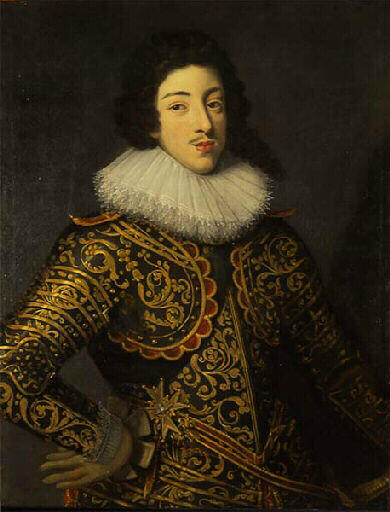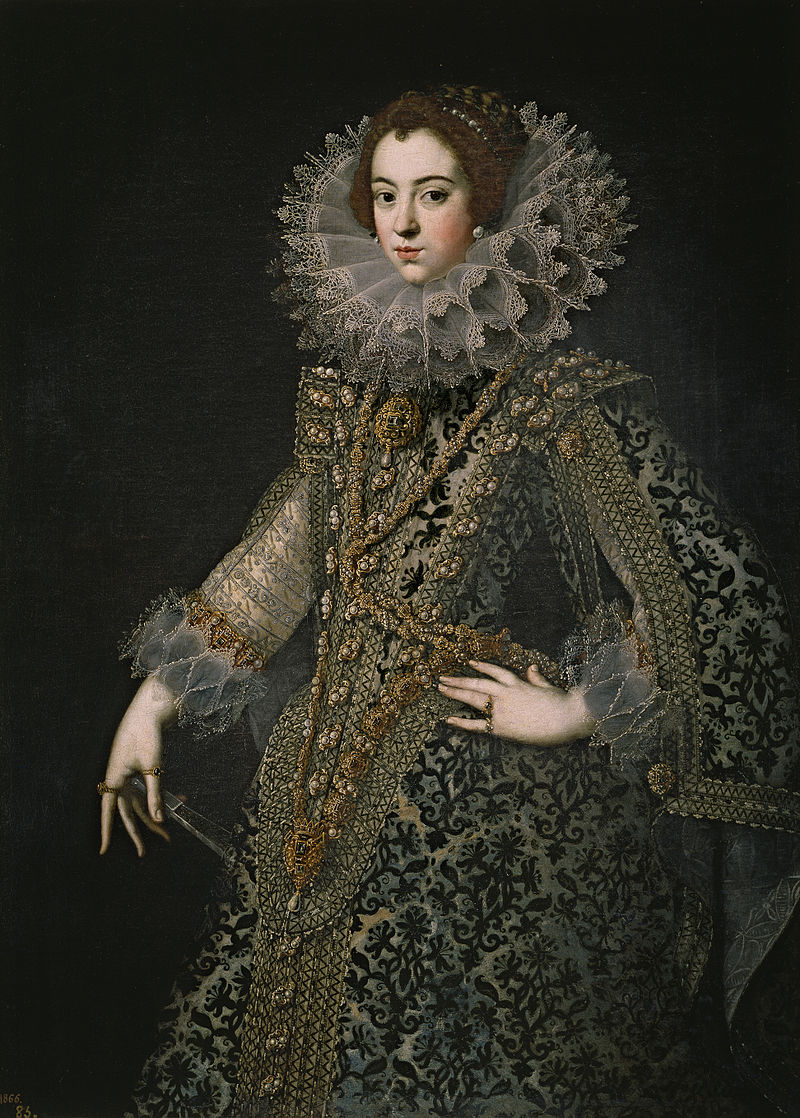 |
| Henri IV, first Bourbon King of France |
_-_(2).JPG/800px-0_Marie_de_M%C3%A9dicis_-_Frans_Pourbus_le_Jeune_-_Louvre_(INV1710)_-_(2).JPG) |
| Marie de' Medici |
Today we will discuss Henrietta Maria's parents and full siblings, Henrietta Maria being the heroine of my novel, My Queen, My Love. Someday I will do a post on
all the children of Henri IV.
Henri IV or Henri of Navarre has been celebrated by the French people as the monarch who was the epitome of justice, kindness, and virility. The fact of his many mistresses and bastards never hindered his popularity, so great were his achievements on behalf of the French people in ending the Wars of Religion. His childless first marriage with his cousin Marguerite de Valois was annulled so that he could have legitimate offspring. He married the much younger and extremely wealthy and beautiful Italian princess Maria de' Medici in 1600. Queen Marie was devoutly Catholic and, loving her husband, suffered from his unfaithfulness. After she bore several children, Henri had Marie crowned at Notre Dame de Paris. The day after her coronation in 1610, Henri was assassinated. Marie became the Regent for her young son, Louis XIII.
As Regent, Queen Marie chose to avoid war by making peace with the other Catholic powers of Spain and the Empire. She believed that Catholic monarchies should unite to keep Protestantism at bay. She sent her youngest daughter Henriette to marry in England because she believed there was a chance of bringing Charles I into Catholicism. In her later years, a falling-out with her oldest son Louis XIII led to her exile and eventual death in penury in Germany. On Marie de' Medici from Women of Style:
During her reign, Marie undertook several large art projects, including building and furnishing of the Palais du Luxembourg, she called “Palais Medicis”. Flemish master Peter Paul Rubens, whom Marie met around the time of her wedding, was commissioned to create paintings glorifying her life and reign and this series of 21 paintings along with portraits of Marie and her family is now known as the Marie de Medici cycle and hangs in the Louvre.
The task of painting Marie’s life and triumphs was a difficult one since Rubens had to create 21 paintings about a woman whose life consisted of marriage, giving birth to six children, one of which died in infancy and political scandals that made any literal description of the events too controversial to execute without angering someone in government.
Rubens, already established as an exceptional painter, turned to classical literature and artistic traditions and used allegorical representations to glorify the queen’s achievements and sensitively illustrate the less favorable events in Marie’s life. He painted extravagant images of the Queen Mother surrounded by ancient gods. (Read more.)
 |
| Louis XIII |
Louis XIII was short, ungainly, and---until disease attacked him---inclined to corpulence. He was not beautiful, although Sully, who had served the royal house so faithfully, professed to admire the boy's regular features. His nose was too large, his head out of proportion to his body, his chin projected, his lover lip was unpleasantly thickened, and his mouth was usually half-open. Owing to the awkward formation of his palate he was compelled to speak little and slowly to avoid a trying stammer. He suffered from chronic gout, and it is almost certain that he had at least one epileptic fit. His teeth were decayed, and he was a continual invalid through persistent dyspepsia. Most of these physical defects may be traced in his family history. Many of them he bequeathed to his sons. Philip inherited his undersized stature as well as his brown hair and swarthy skin. In profile Louis XIV challenged comparison with the ancestral Bourbons, and was in more ways than one a true grandson of Henri IV. (Read more.)
 |
| Élisabeth of France, also called Isabel. Queen of Spain. |
| Christine de France, Duchess of Savoy |
Monsieur d'Orléans
Monsieur d'Orléans died before he could be named, since the French royal children were named and christened when they were older. From Wikipedia:
Marie de' Medici gave birth to her fourth child, a son, at the Palace of Fontainebleau. Like all of her other children, he was born in the Oval room, later called the "Louis XIII salon".[1] Born at 22:00 on 16 April 1607, the day after Easter, the prince's birth was a source of tremendous joy for his father, King Henry. His newborn son was said to resemble him, possessing the same large nose and "sparkle of his father's eyes".[2] (Read more.)
.jpg/800px-Full_length_portrait_painting_of_Gaston_of_France%2C_Duke_of_Orl%C3%A9ans_in_1634_by_Anthony_van_Dyck_(Mus%C3%A9e_Cond%C3%A9).jpg) |
| Gaston of France, Duke of Orléans |
 |
| Henriette-Marie de France as a child |
Share






_by_Daniel_Dumonstier.jpg/800px-A_sketch_presumed_to_be_Nicholas_Henri_of_France_(Duke_of_Orl%C3%A9ans)_by_Daniel_Dumonstier.jpg)











No comments:
Post a Comment